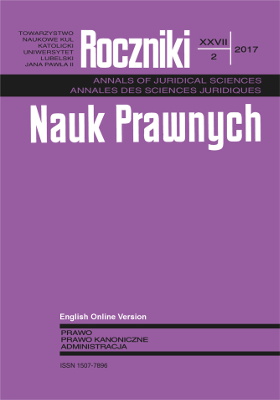The Evolution of the Female Diaconate in the Legislation of Gallic Synods in Late Christian Antiquity
The Evolution of the Female Diaconate in the Legislation of Gallic Synods in Late Christian Antiquity
Author(s): Marcin BiderSubject(s): Law, Constitution, Jurisprudence, Canon Law / Church Law
Published by: Towarzystwo Naukowe KUL & Katolicki Uniwersytet Lubelski Jana Pawła II
Keywords: deaconesses; ordination; widows; consecration of virgins; monasticism; Saint Radegund;synod;
Summary/Abstract: The reconstruction of the canonical structure of the female diaconate in Gaul in the period between the fourth and sixth centuries runs into serious difficulties due to the scarcity of extant legal sources. The legislation of the six Gallic synods, which thoroughly dealt with the question of deaconesses, has survived until today. The synodal agenda also included issues related to the determination of the canonical status of widows and consecrated virgins, from amongst whom candidates for Gallic deaconesses were recruited. The crystallisation of the legal norms governing the female diaconate took place in the context of the ongoing Priscillian disputes and the emergence of the monastic movement. Despite the continued opposition towards the phenomenon of ordination of deaconesses expressed by the synods to come, such women certainly were still present in Gaul in the 6th century, as evidenced by the preserved literary and epigraphic materials. Due to the evolution of the term “diaconal” in the 6th century, the term acquired an additional meaning, namely “wife of a deacon.”
Journal: Roczniki Nauk Prawnych
- Issue Year: 27/2017
- Issue No: 2EV
- Page Range: 79-108
- Page Count: 30
- Language: English

